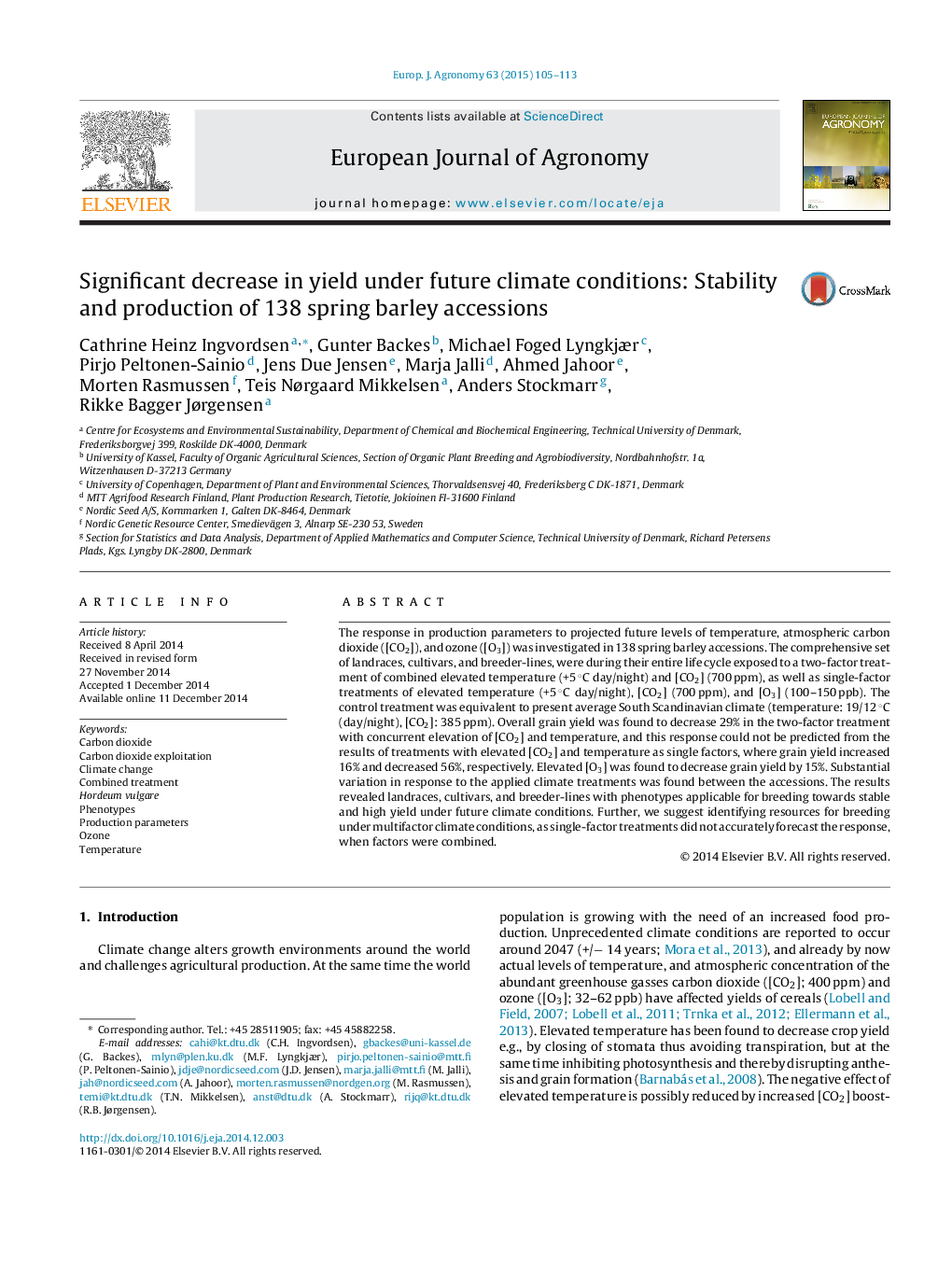| کد مقاله | کد نشریه | سال انتشار | مقاله انگلیسی | نسخه تمام متن |
|---|---|---|---|---|
| 6374296 | 1624462 | 2015 | 9 صفحه PDF | دانلود رایگان |
- Grain yield of 138 barley accessions under elevated temperature, [CO2] and [O3].
- Combined elevated temperature and [CO2] decreased grain yield by 29%.
- Substantial phenotypic variation found in response to the climate treatments.
- Stable and high yielding barley accessions identified under changed climate conditions.
- Results from single-factor treatments could not predict the outcome of the combined treatment.
The response in production parameters to projected future levels of temperature, atmospheric carbon dioxide ([CO2]), and ozone ([O3]) was investigated in 138 spring barley accessions. The comprehensive set of landraces, cultivars, and breeder-lines, were during their entire life cycle exposed to a two-factor treatment of combined elevated temperature (+5 °C day/night) and [CO2] (700 ppm), as well as single-factor treatments of elevated temperature (+5 °C day/night), [CO2] (700 ppm), and [O3] (100-150 ppb). The control treatment was equivalent to present average South Scandinavian climate (temperature: 19/12 °C (day/night), [CO2]: 385 ppm). Overall grain yield was found to decrease 29% in the two-factor treatment with concurrent elevation of [CO2] and temperature, and this response could not be predicted from the results of treatments with elevated [CO2] and temperature as single factors, where grain yield increased 16% and decreased 56%, respectively. Elevated [O3] was found to decrease grain yield by 15%. Substantial variation in response to the applied climate treatments was found between the accessions. The results revealed landraces, cultivars, and breeder-lines with phenotypes applicable for breeding towards stable and high yield under future climate conditions. Further, we suggest identifying resources for breeding under multifactor climate conditions, as single-factor treatments did not accurately forecast the response, when factors were combined.
Journal: European Journal of Agronomy - Volume 63, February 2015, Pages 105-113
